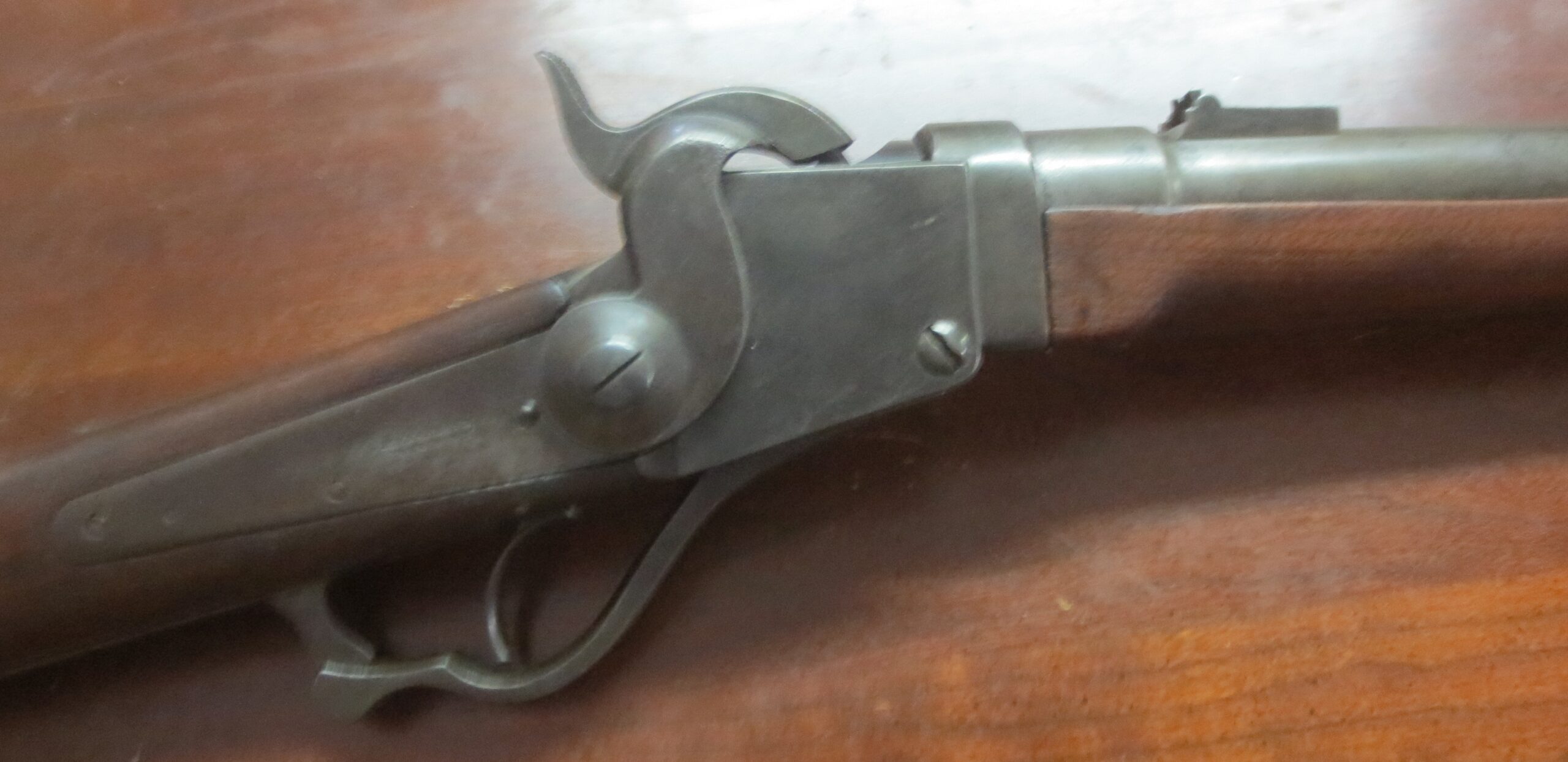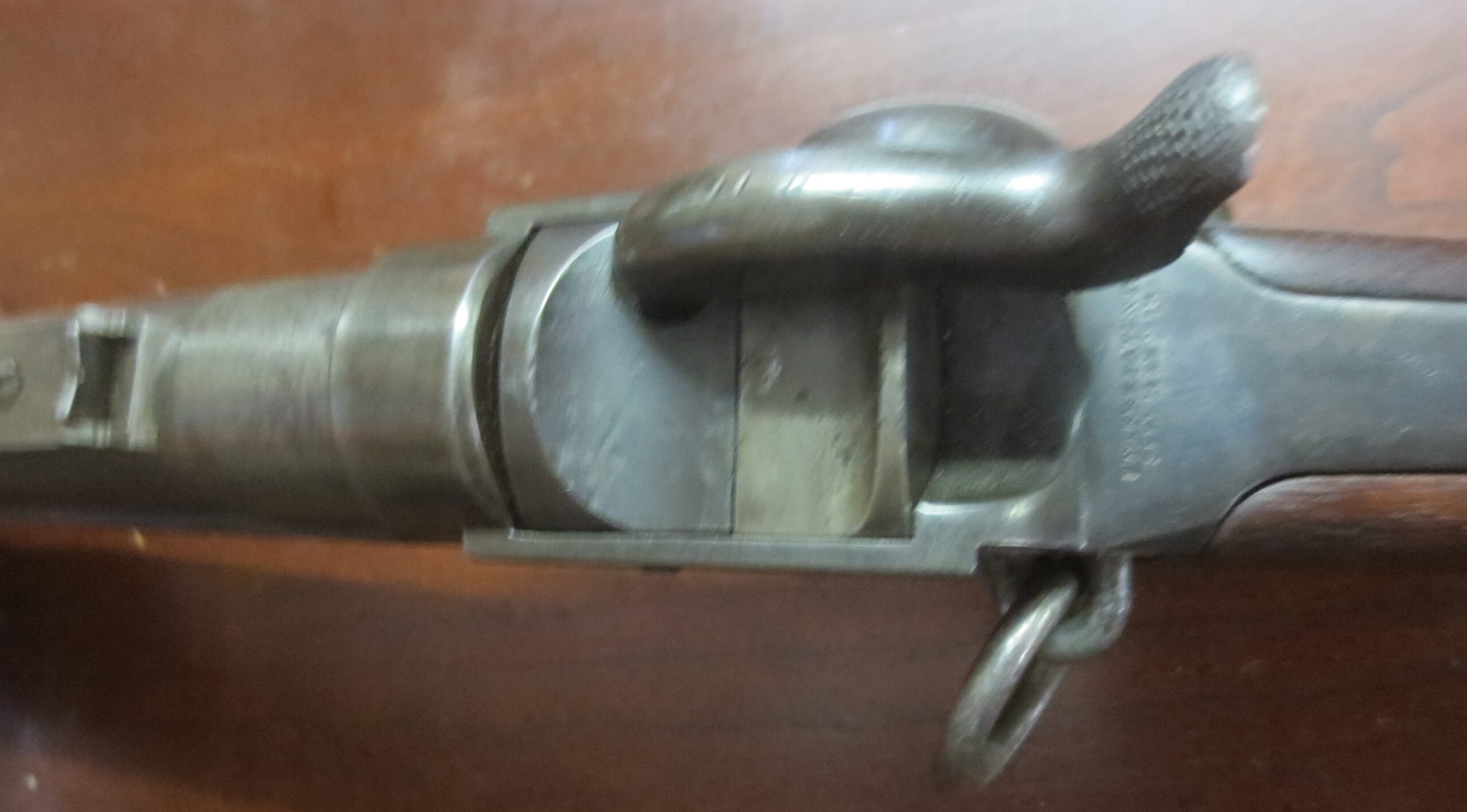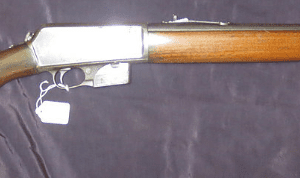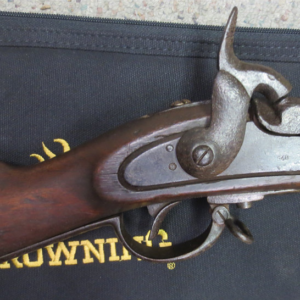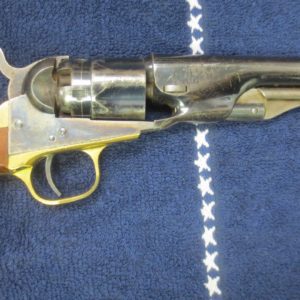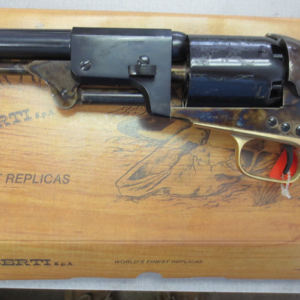Description
Issued to the Federal cavalry during the Civil War, this weapon is a very solid example of a Starr percussion cavalry carbine. It is a breech loading .54 caliber weapon produced by the Starr Arms Company of Yonkers, New York. The Starr carbine resembled the more famous ‘Sharps’ carbine of the time but the Union cavalrymen did not think as highly of the Starr as they did the Sharps. The first shipment of 1000 Starr percussion carbines was delivered to the Ordnance Dept in September 1863, and in total over 20,000 such weapons were purchased by the US government.
Manufactured between 1862 and 1865, the Starr percussion carbines were all .54 caliber breechloaders fitted with 21” long, round tapered barrel. The carbine employed a split breech, drop block mechanism that allowed the trooper to insert a linen cased cartridge into the chamber of the breech. Upward motion of the operating lever / triggerguard closed the breech, and ignition was activated with the striking of a percussion cap by the external hammer. The weapon measured 37½” long and weighed 7 lbs. 6 oz. The iron lockplate and frame were casehardened and the barrel, blued.
This original carbine bears serial #12824 and features a two-piece black walnut stock with an 8” long fore-end secured by a single brass barrel band. Has a 14½” long buttstock with a brass buttplate. Some case colors remain on the lock and the barrel shows a deep mellow age patina. The maker stampings on the lockplate are clear and read “STARR ARMS CO. / YONKERS, N.Y.” in two lines. The barrel surface has a thin, one-line marked “STARR ARMS CO. YONKERS, N.Y.” in front of the rear sight. The receiver tang in back of hammer is stamped with “STARR’S PATENT / SEPT. 14th 1858” and a single iron sling ring is mounted on the left side of the receiver.
According to the Springfield Research database, this weapon was issued to the 20th New York Cavalry in 1863.
On June 19, 1863, Col. Newton B. Lord received authority to recruit this regiment which received its numerical designation October 8, 1863 and was organized at Sackett’s Harbor, NY. The companies were recruited principally; A at Sackett’s Harbor, Champion, Denmark, Pinckney and Wilna; B at Sackett’s Harbor, Brownville, Clayton, Dexter, Lyme, Philadelphia, Orwell and Watertown; C at Antwerp, Alexandria, LeRay, Theresa and Watertown; D at Cape Vincent, Clayton, Ellisburg, Mannsville, LaFargeville, Sackett’s Harbor and Watertown; E at Champion, Diana, Croghan and Wilna; F at Copenhagen, Redwood and Syracuse; G at Albany, Cape Vincent, Evan’s Mills, Rome, Syracuse and Watertown; H at Antwerp, DeKalb, Edwards, Fowler and Gouverneur; I at Cape Vincent, Oswego, Rome, Sackett’s Harbor, Syracuse and in St. Lawrence county; K at Albany, Sandy Creek, Sackett’s Harbor, Wilna and Watertown; L at Norwich, Oswego, Penn Yan, Sackett’s Harbor and Syracuse; and M at Sackett’s Harbor, Albany, Herkimer, Norwich, Mannsville, Oswego, Rome, Theresa and Watertown.
The regiment left the State September 30, 1863 and served in the 22d Corps from October, 1863, Company F at Portsmouth, Va., from October, 1863; all at Portsmouth, Va., in the Department of Virginia from November, 1863; in Heckman’s Division, 18th Corps, from January, 1864; in the defenses of Portsmouth, Va., in the district of East Virginia, Department of Virginia and North Carolina, from April, 1864; in 1st Brigade, Kautz’s Division, Cavalry, Army of the James, from December 3, 1864; Company D at Fort Pocahontas, Va., in Separate Brigade, defenses of Bermuda, from January, 1865; Company F at Fort Powhattan, Va., and Company G in 1st Brigade, Mackenzie’s Division of Cavalry from March, 1865; Company I with the Provisional and 10th Corps in March, 1865.
The regiment was honorably discharged and mustered out under the command of Col. David M. Evans July 31, 1865, Companies E and H at Fort Monroe, the other companies at Manchester, Va.
During its service it lost by death, killed in action, 6 enlisted men; of wounds received in action, 1 enlisted man; of disease and other causes, 2 officers, 121 enlisted men; total, 2 officers, 128 enlisted men; aggregate, 130; of whom 15 enlisted men died in the hands of the enemy.
